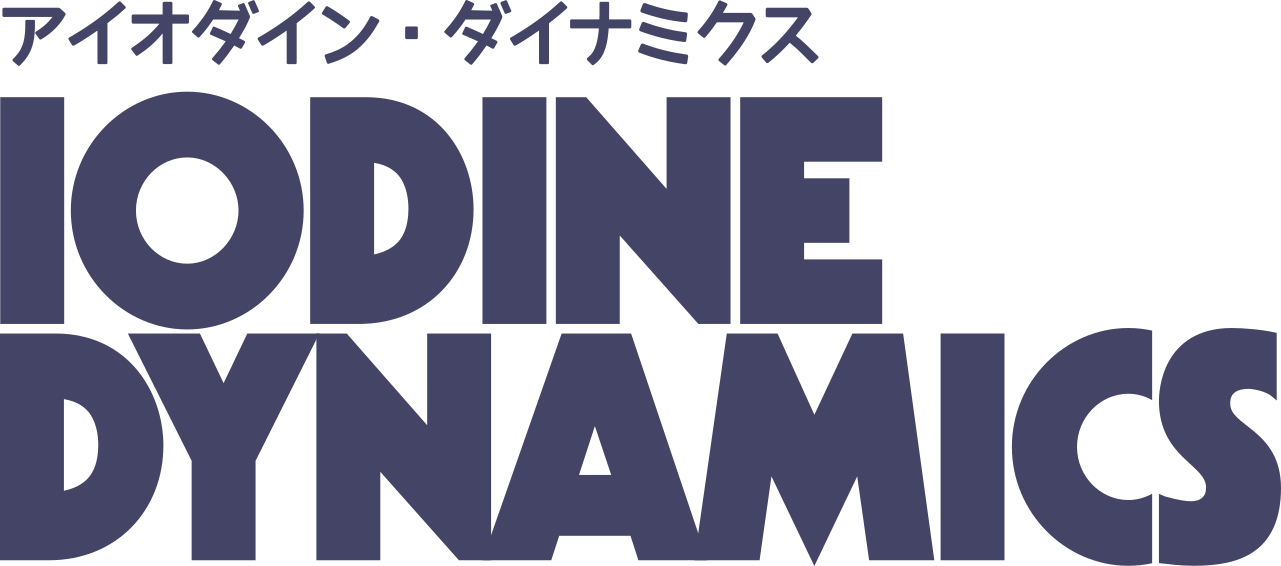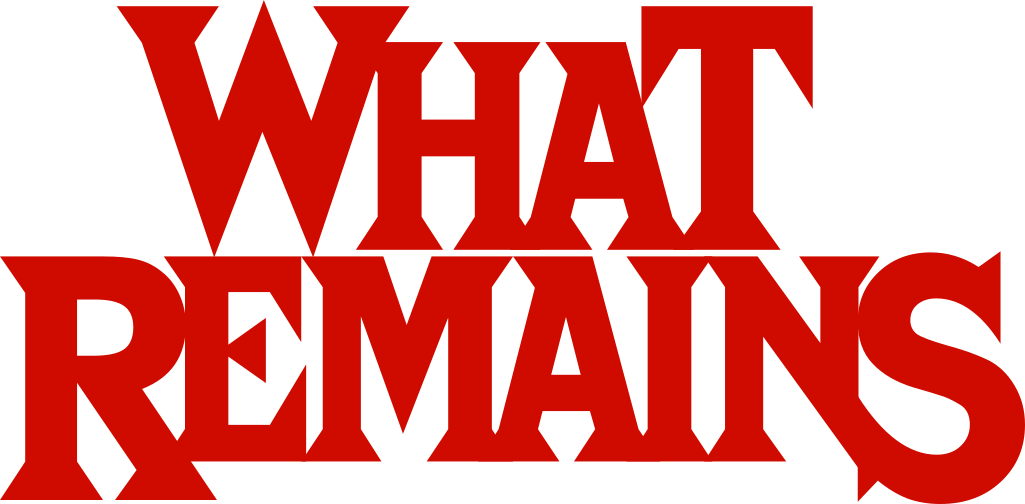
Here you can find a collection of CC0 licensed images and texts that you can use for any purpose :)
The project
Iodine Dynamics
Iodine Dynamics is a collective of artists, hackers, and musicians interested in developing works for a broad audience, and in relation to pressing societal issues. Iodine Dynamics is represented by Arnaud Guillon, Chun Lee, Dustin Long, Aymeric Mansoux and Marloes de Valk.
The game
What Remains is an 8-bit interactive fiction and adventure video game about environmental issues, the manipulation of public opinion, and whistleblowing. It is distributed on recycled video game cartridges for the original 1985 NES. The game story is based on a two year long research seeking to identify several strategies used to delay industry regulation and manipulate public opinion during the 80s. More specifically, we explored ways to show the strategies used by a.o. the oil and tobacco industry to spread false information and doubt, influencing public opinion in order to delay new regulations to protect the public and the environment. These same strategies are still used today, by industries and governments, creating a huge obstacle to effectively act on the threat of global warming.
The development of What remains was supported by Creative Industries Fund NL, Democracy & Media Foundation, Het Nieuwe Instituut, Akademie Schloss Solitude, ZKM Center for Art and Media Karlsruhe, V2_ Lab for the Unstable Media, WORM Pirate Bay, FoAM Kernow, Varia, ESC Medien Kunst Labor, Hotel Mariakapel, and Servus.
Digital Download and physical release
The game is developed for the original NES hardware. The ROM is available on itch.io as pay what you want/can (including gratis), and is fully playable in most NES emulators. The source code and the tools created for the development of the game will be published soon after the game release. A limited run of 80 recycled cartridges is being produced by reusing and repurposing original components, in line with the project’s concept and scope.
Statement
Our project was motivated by several intentions. First of all, we wanted to address the side-effect of mass production and mass consumerism and how it is linked to environmental disasters in an engaging way, trying to be critical, educational but in a way that would not alienate our audience. Looking at the world today and researching about the paralysis we face in relation to global warming and the impact on the environment of the wasteful life of post-industrial countries and rising new international powers, it was striking to see similarities with events that already took place in the 80s. We decided to tell a story that draws a parallel but also takes some distance from today's issues in order to potentially look at what is going on with fresh eyes. The choice of using a video game as medium allows the player to actively engage with these topics, instead of read about it. Next to that, we wanted to demonstrate the potential of post-digital culture, and in particular its ability to resist the dichotomy between old and new media. For instance, musicians are still using, composing and playing on pianos that were produced in series more than 100 years ago. We want to show that many objects of mainstream computational culture have the same potential of circulation and creative (re-)appropriation as soon as you step out of the logic of mass consumerism and planned obsolescence. A 1985 Nintendo console and the hardware used for some of its worst games do not have to end up either in a museum, as nostalgic fetishism, in a landfill or shipped as e-waste to Africa. We can do better, and we are part of a growing and thriving community of hackers, artists and musicians who believe that these devices are waiting to be claimed back. Finally, and for the reasons above, we decided to release the game on original, recycled cartridges that we have modified in order to store new content: our game. The game is also available online as a freely downloadable ROM playable in any NES emulator. Next to that we are publishing both the source code, and our game specific technical documents and instructions for others to get started with NES hacking and the NES developer community.
Further Reading
- General game description
- Interview with curator and TATE Digital Preservation researcher Annet Dekker
- PDF “Recycling old strategies and devices: What Remains, an art project dealing with disinformation campaigns (re)using strategies to delay industry regulation” (pre-print, peer reviewed article draft for Art Nodes Journal, not to be shared at time of writing)
Screenshots and photos
Note: All the images below are previews, download the following zip file for all the high-res and/or native resolution versions:
General screenshots
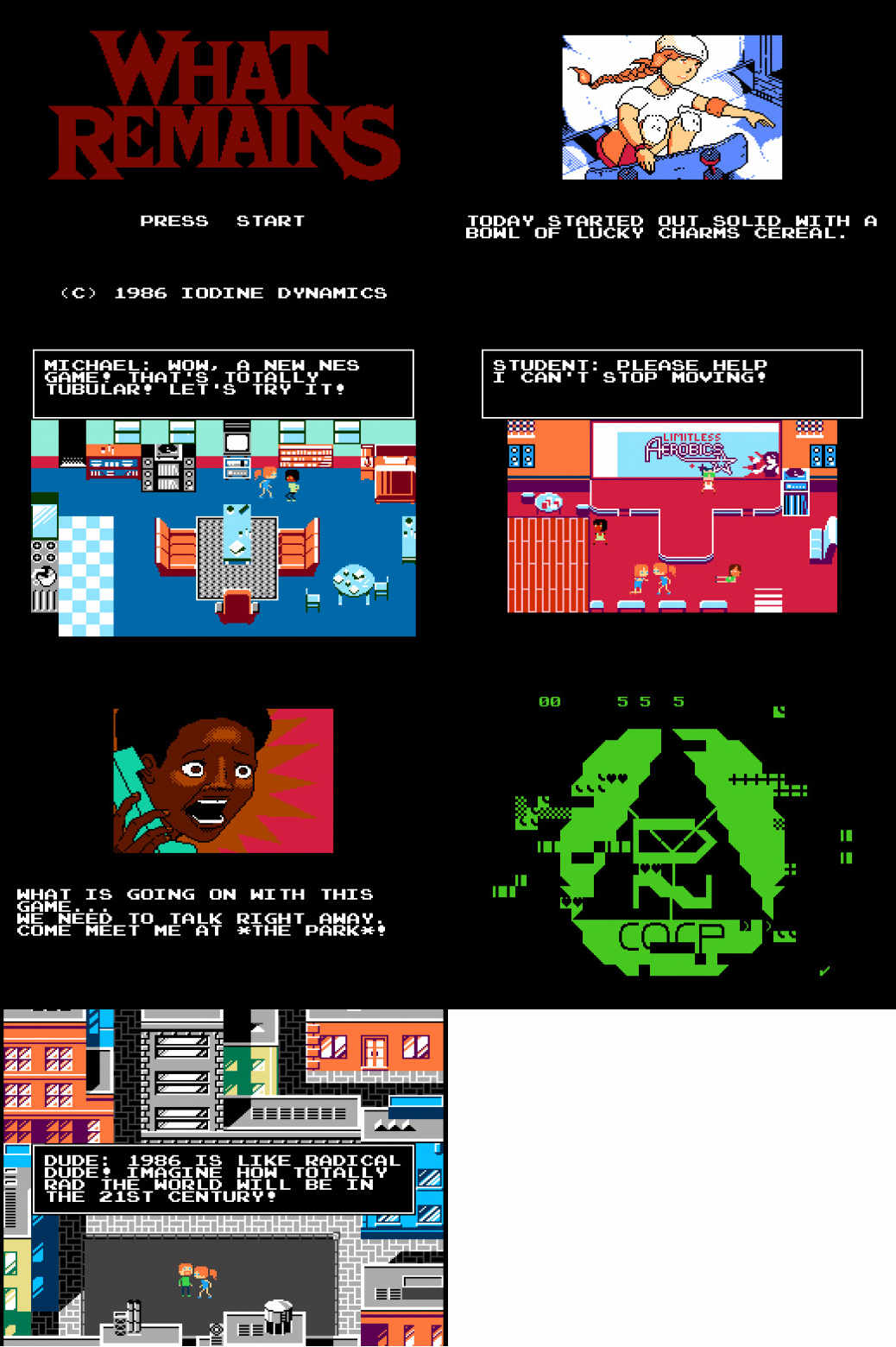
Public events
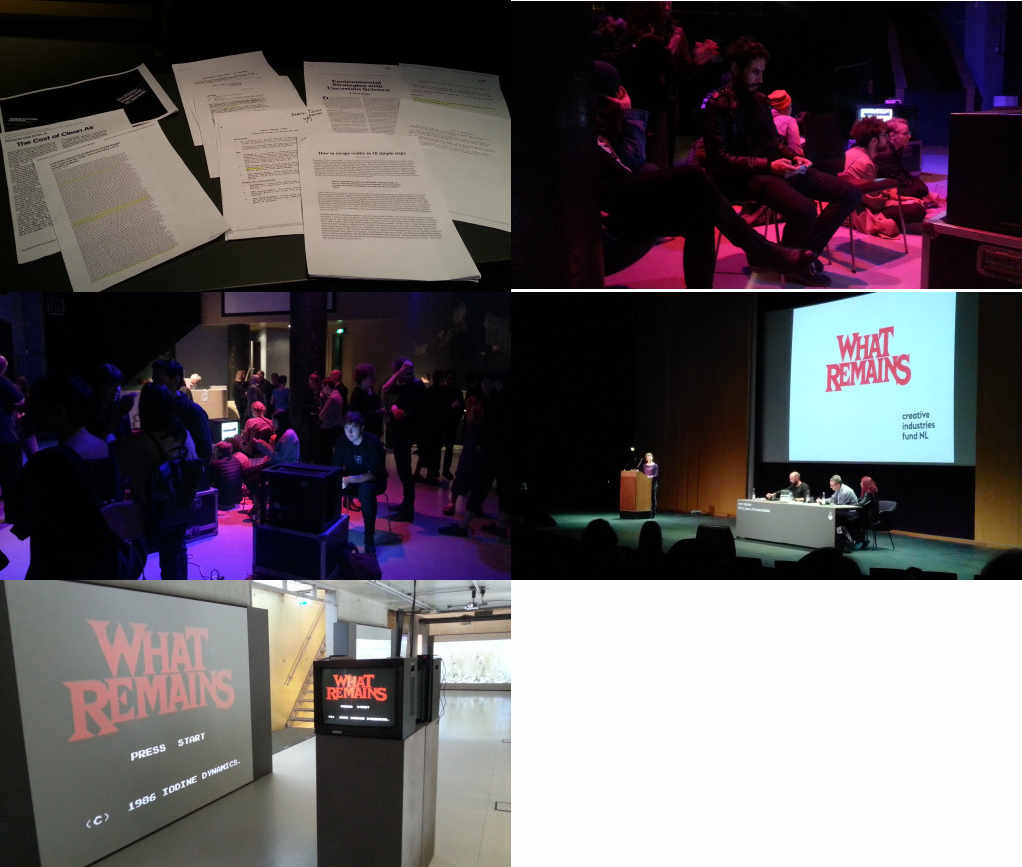
Scientist sequence
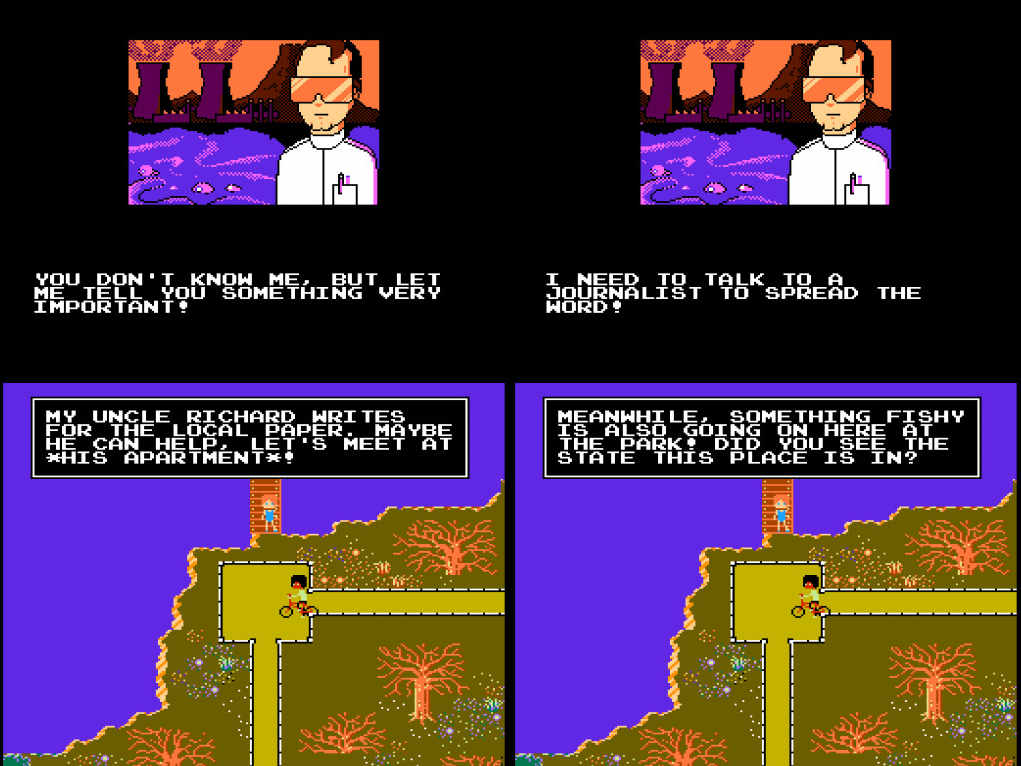
Backgrounds
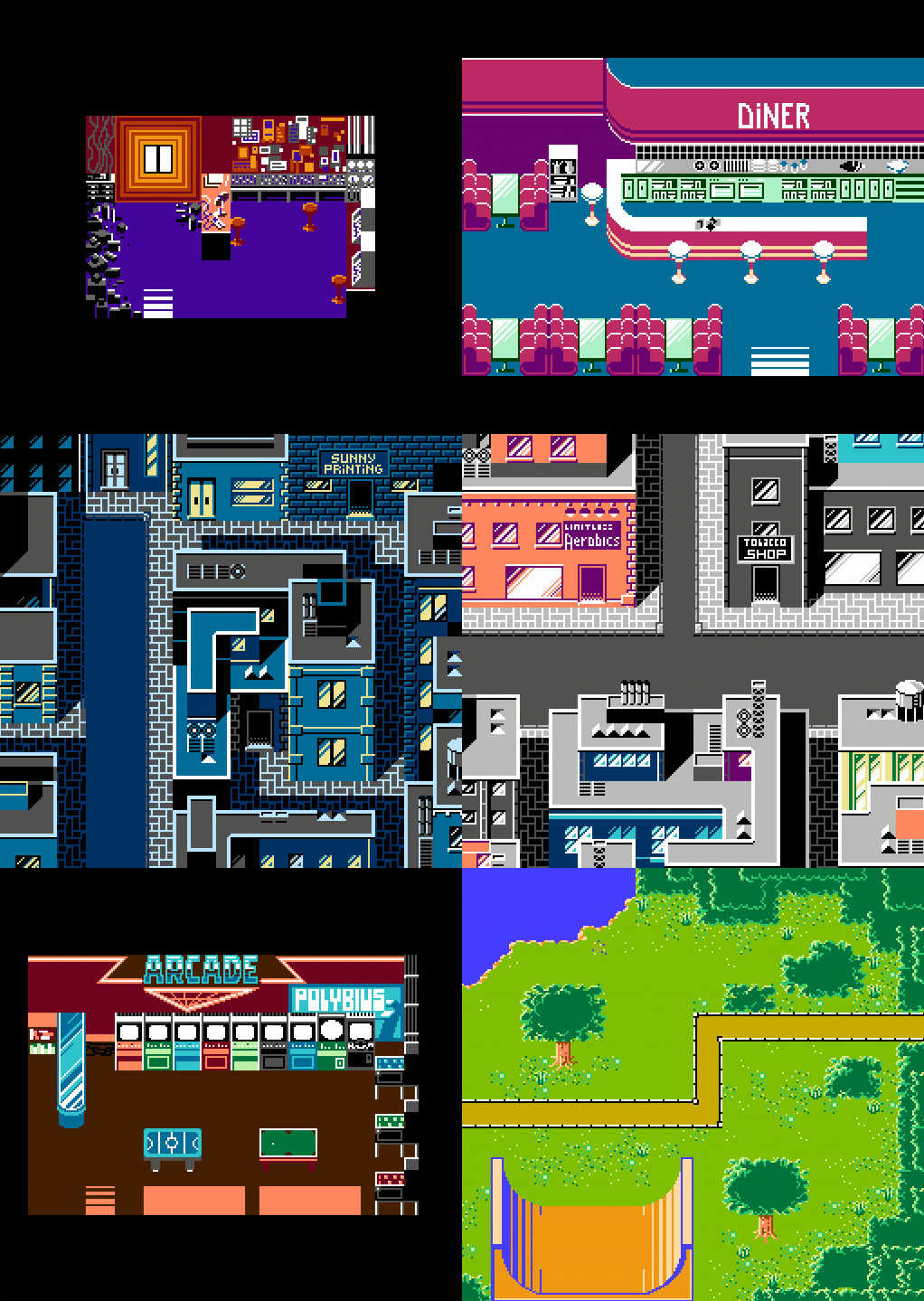
Sprites
Tools and workflow

Hardware

